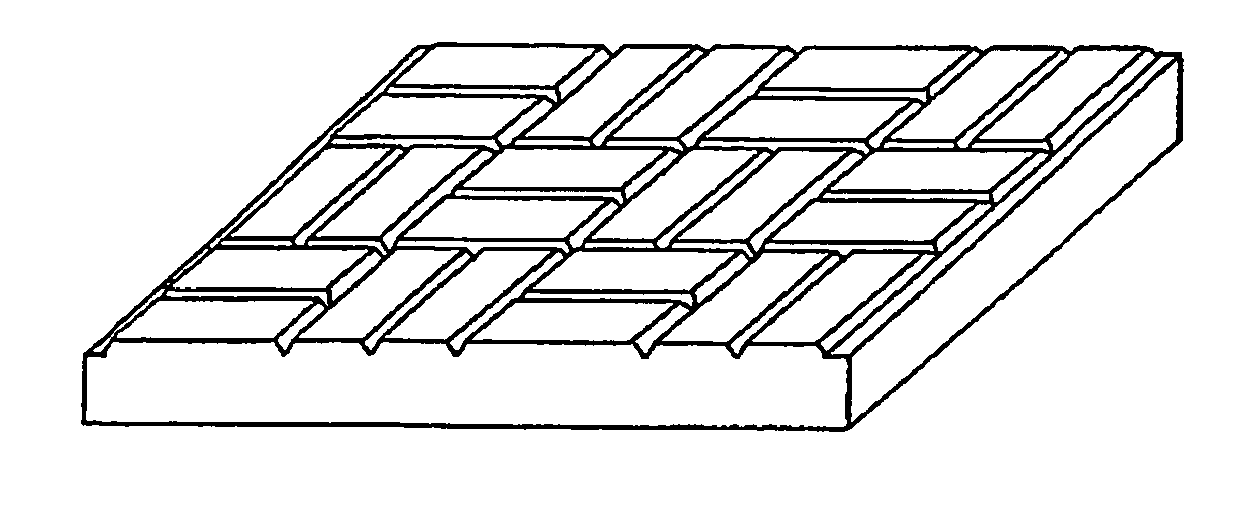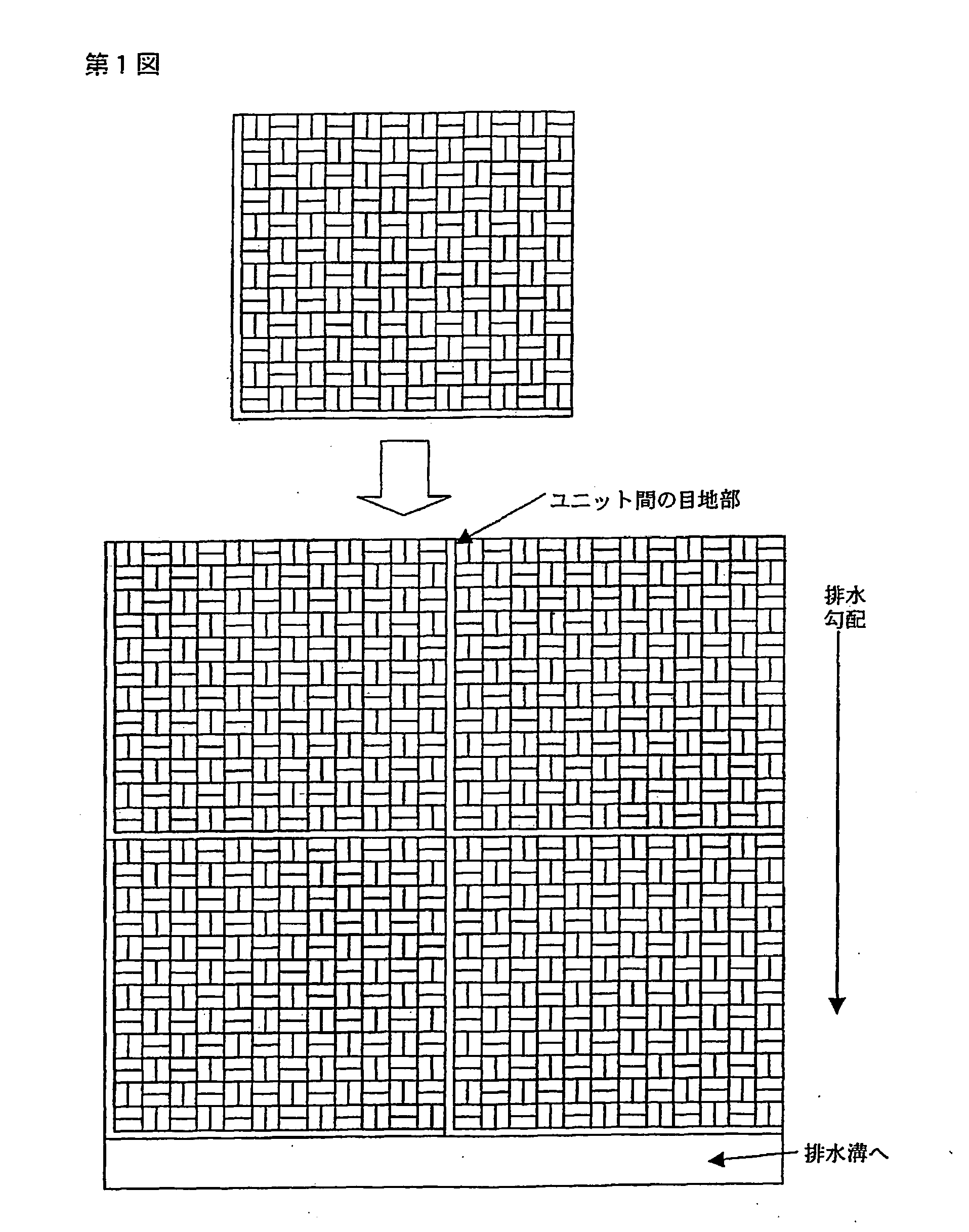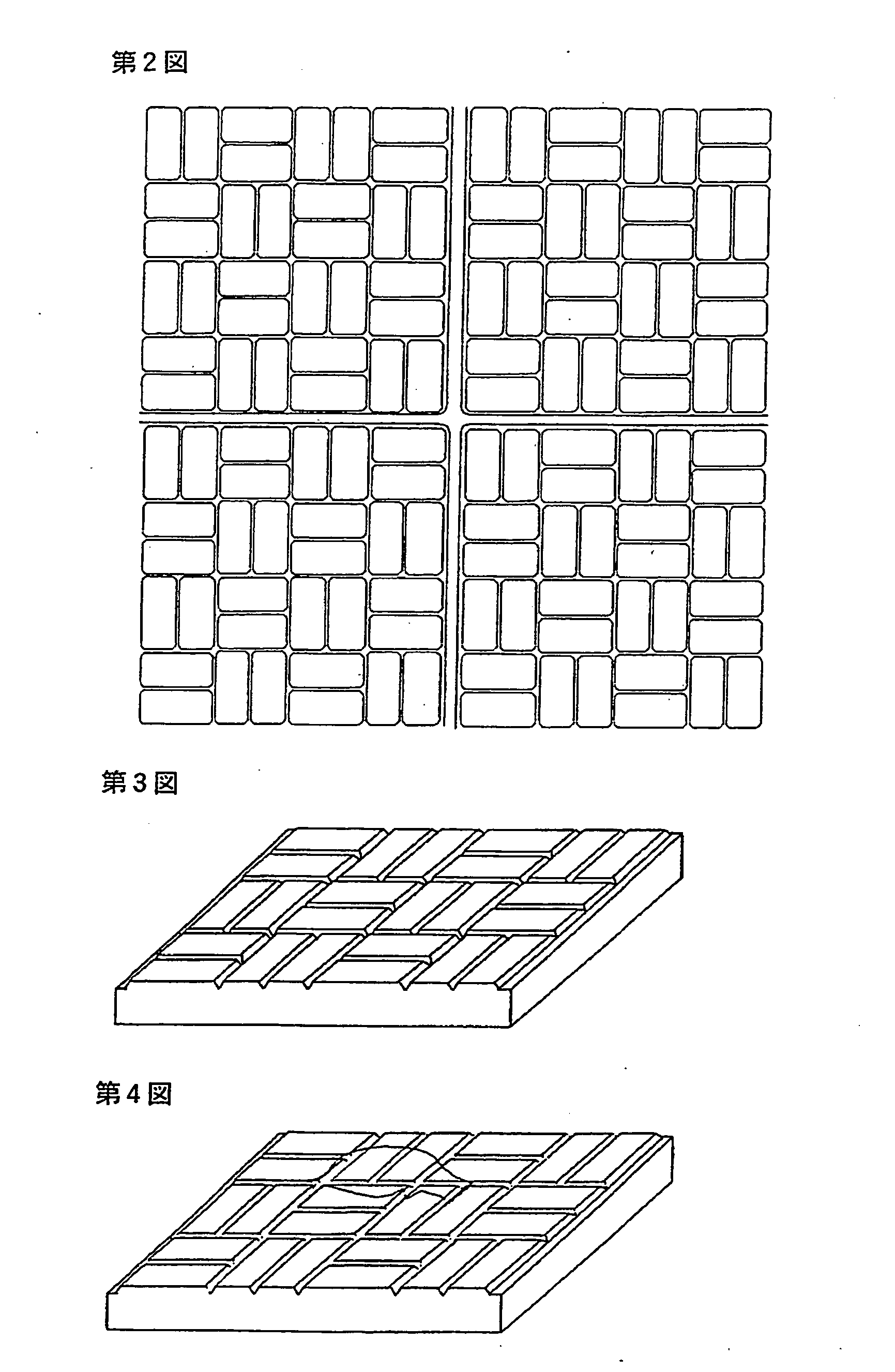Building material and method of manufacturing the material
a technology of building materials and manufacturing methods, applied in the field of building materials, can solve the problems of easy slipping at the time of cleaning, preferable from the viewpoint of hygiene, and workers' slippage, and achieve the effect of accelerating floor drying and draining water, and being convenient to us
- Summary
- Abstract
- Description
- Claims
- Application Information
AI Technical Summary
Benefits of technology
Problems solved by technology
Method used
Image
Examples
example 1-1
[0049] An earthenware tile on which a glaze was applied and having a size of 300 mm×300 mm was produced, in which each unit had a square shape of 20 mm×20 mm, and grooves having a V shape, a width of 2 mm and a depth of 1 mm were formed. As the method for producing thereof, pressure forming was employed. Specifically, by using a die in which projections were provided so as to form desired grooves in a formed product, pressure was applied so as to obtain a formed product, the product was biscuit-fired, a glaze was applied thereto, and it was fired at a temperature of 1200° C. for 40 minutes. The tile was arranged on a floor at a tilt angle of around 5 degrees, and water was fed to the surface of the tile. The water dispersed on the fresh glaze of the tile (a fresh one has a high hydrophilic property and its contact angle with respect to water is about 20 degrees), and flowed along the grooves. Although some water remained on the island-shaped projections like a thin film, the water w...
example 1-2
[0050] A stoneware tile on which a glaze was applied and having a size of 300 mm×300 mm was produced, in which each unit had a square shape of 20 mm×20 mm, and grooves having a V shape, a width of 2 mm and a depth of 1 mm were formed. As the method for producing thereof, wet extrusion forming was employed. Specifically, a tile raw body was formed into a plate shape by extrusion forming, and a metal roller having a pattern for forming grooves was pushed thereonto. The product was dried and biscuit-fired, a glaze was applied thereto, and it was fired at a temperature of 1200° C. for 60 minutes. The tile was arranged on a floor at a tilt angle of around 5 degrees, and water was fed to the surface of the tile. The water dispersed on the fresh glaze of the tile (a fresh one has a high hydrophilic property and its contact angle with respect to water is about 20 degrees), and flowed along the grooves. Although some water remained on the island-shaped projections like a thin film, the water...
example 1-3
[0051] A porcelain tile on which a glaze was applied and having a size of 300 mm×300 mm was produced, in which each unit had a square shape of 20 mm×20 mm, and grooves having a V shape, a width of 2 mm and a depth of 1 mm were formed. As the method for producing thereof, pressure forming was employed. Specifically, a plate-like product was formed by applying pressure, grooves were dug by irradiating with laser light having an intensity of ¼ for cutting a tile, and the surface was cleaned. A glaze was applied thereto, and it was fired at a temperature of 1280° C. for 60 minutes. A silicone-based water-repellent (PORON C) was applied only to the island-shaped projections by applying a plate roller to the tile. The tile was arranged on a floor at a tilt angle of around 5 degrees, and water was fed to the surface of the tile. Since the island-shaped projections were water-repellent, the contact angle with respect to water turned 100 degrees. The water rolled on the water-repellent, and ...
PUM
| Property | Measurement | Unit |
|---|---|---|
| depth | aaaaa | aaaaa |
| depth | aaaaa | aaaaa |
| depth | aaaaa | aaaaa |
Abstract
Description
Claims
Application Information
 Login to View More
Login to View More - R&D
- Intellectual Property
- Life Sciences
- Materials
- Tech Scout
- Unparalleled Data Quality
- Higher Quality Content
- 60% Fewer Hallucinations
Browse by: Latest US Patents, China's latest patents, Technical Efficacy Thesaurus, Application Domain, Technology Topic, Popular Technical Reports.
© 2025 PatSnap. All rights reserved.Legal|Privacy policy|Modern Slavery Act Transparency Statement|Sitemap|About US| Contact US: help@patsnap.com



